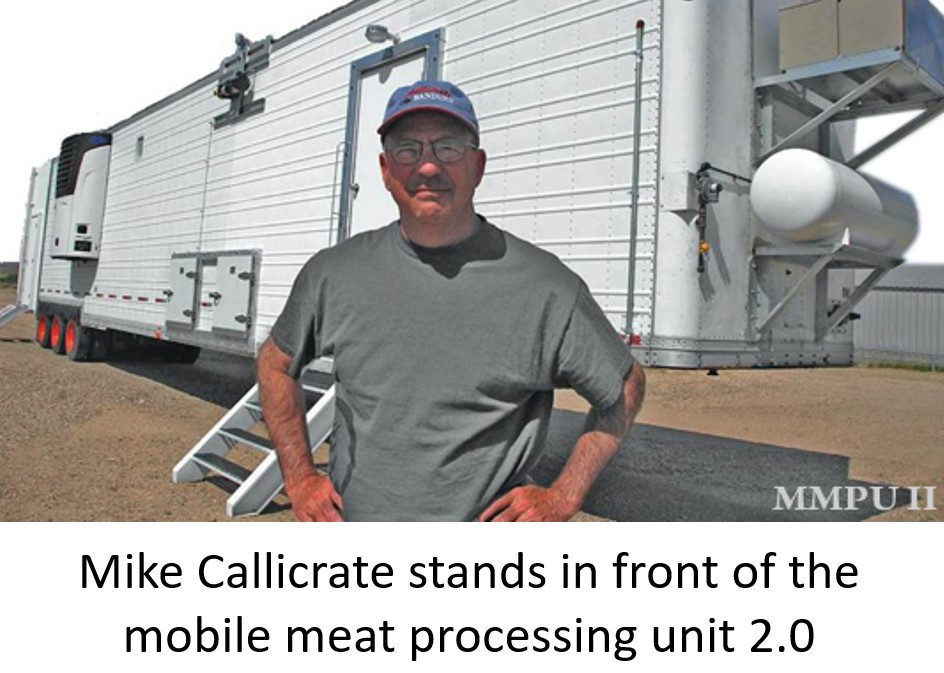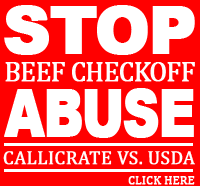Basically, the only step taken after the tragic Jack in the Box incident was the attempt by USDA to educate the public about safer meat handling and safe cooking temperatures. Fast food restaurants, along with many consumers, were told to “Just cook the crud out of it”. Big meat just kept on doing things as usual.
I would argue that we are producing more pathogen contaminated meat now than in 1993. The major packers are even bigger, with even greater capacity for efficient distribution of pathogens via their vast global networks. They continue to operate under unsanitary conditions with chains that move way faster than people. Their mostly refugee workforce is poorly trained and unable to converse in the massive plants where over 100 languages are spoken. USDA inspectors still cannot stop the chain for contamination on a carcass.
When results from in-house testing appear to be positive for E.coli, the meat can be marked “For Cooking Only” and sent to the meat packers own cooker, or off to Advanced Foods in Enid, Oklahoma where the meat is cooked and distributed to schools, prisons, retirement homes or other establishments looking for cheap “heat and serve” items. Other E.coli contaminated meat may be processed with anhydrous ammonia and included in Eldon Roth’s Advanced Meat Recovery (a.k.a. “pink slime”) for addition to America’s hamburgers and other low-quality processed food items. No official USDA record is required to be made of these incidents of E.coli.
Unbelievably, USDA still does not allow tracebacks to the source – the point of slaughter where contamination continues to occur everyday. Former small plant owner and food safety advocate John Munsell observes, “It’s ironic that while Germany and the other countries suffering from E.coli-contaminated cucumbers are pursuing tracebacks to Spain (& perhaps the Netherlands), and FDA can trace contaminated produce back to one spinach farm in CA, one pepper farm in Mexico, etc, that FSIS cannot (WILL NOT) trace back hot meat to the source slaughter plant involved.”
Under heavy lobbying influence, Congress has once again failed to properly regulate too-big-to-fail business. The self-inspection “HACCP Hoax” (Hazard Analysis Critical Control Point Inspection Model), deeply imbedded in the Food Safety Modernization Act, relegates inspectors to the paper pile instead of the processing line. Resigning out of frustration, Supervisory Public Health Veterinarian, Dr. Nienhueser wrote, “…the Agency is focusing on a paper chase and paper verification instead of an actual pathogen chase and is wasting millions of tax-payer dollars in the process.”
Allowing HACCP non-inspection and corporate self-policing are not the answer to improving food safety – It takes sanitary practices, hands-on inspection and total accountability!
Mike Callicrate
——————
Op-Ed Contributor
By JEFF BENEDICT
Published: June 4, 2011
Buena Vista, Va.
THE E. coli outbreak sweeping Europe is the deadliest on record: 18 people have died and there are almost 2,000 reported cases in nine countries.
While Americans have been following the disaster through news reports, few of us feel threatened. After all, we took steps to protect consumers against E. coli poisoning after the infamous 1993 Jack in the Box outbreak that sickened 750 children and killed four. We haven’t had a comparable outbreak since.
But it would be a big mistake to assume that all is well when it comes to the American food supply and E. coli. On the contrary, the precarious situation we are in today recalls our mind-set just before the 1993 outbreak: naïve complacency.
When news of the outbreak hit, Americans were stunned to discover that one of our most popular foods — hamburgers — could have a lethal pathogen. Officials responded quickly, with some of the biggest changes in food policy since the fallout after the Upton Sinclair novel “The Jungle” appeared.
The federally mandated internal cooking temperature for meat was raised to 155 degrees, which scientists deemed was sufficient to kill E. coli. Cooking and handling instructions were applied to meat and poultry sold in grocery stores, a practice we take for granted today. And the strain of E. coli responsible for the outbreak was declared an adulterant by the Department of Agriculture in 1994, paving the way for mandatory reporting laws and testing procedures at all facilities that produce meat.
The 1993 outbreak introduced the world to E. coli. But the recent outbreak in Europe involves a new strain of the bacteria, one that we know little about. Indeed, there are several other strains afoot; in the United States federal officials have identified six additional strains in our food supply. Referred to by food safety experts as the Big Six or, more technically, non-O157s, these strains have already been associated with food-borne illness outbreaks involving lettuce, raw ground beef, berries and other foods.
These strains are a food-safety disaster waiting to happen. As far back as 2007, the government considered routine testing for the presence of these pathogens in certain raw beef products. But nothing has been done: inspectors don’t test for them, and the public isn’t aware of how they are different from earlier strains. Nor have they been declared adulterants in food, which would lead to stricter quality and reporting standards.
Just like in the early 1990s, few people knew about the bacteria’s presence in meat. Doctors and hospitals in most states weren’t required to report cases of E. coli poisoning. Nor did federal regulators or those in the meat industry test for the presence of E. coli in meat products.
If the government doesn’t act fast, we could repeat history. A report by the Government Accountability Office this year estimated that these new strains cause approximately 113,000 illnesses and 300 hospitalizations annually in the United States. In 2009, a leading microbiology lab randomly purchased 5,070 packages of ground beef in 12 states; it found 301 presumptive positives for E. coli, including 30 with one of the Big Six strains.
Meat isn’t the only vector of these new strains of E. coli. Last year more than two dozen people in seven states were poisoned with a new E. coli strain after eating contaminated lettuce. Since that outbreak, one produce company now routinely tests its leafy greens for these additional E. coli strains. And the Department of Agriculture has worked with the meat and poultry industry to develop tests that can rapidly detect the Big Six strains.
But one produce company conducting voluntary testing is hardly adequate. Nor is it sufficient for the government to simply develop tests that can detect additional strains of E. coli. All food manufacturers should be required to test for these new strains, and food safety regulators should inspect for them.
In December, Congress passed the Food Safety Modernization Act, a landmark law that goes a long way to improving food safety in the United States through mandatory recalls, stricter inspections and better resources for tracking the sources of outbreaks. But so far nothing has happened because Congress hasn’t provided money for the Food and Drug Administration to enforce the law.
The most important part of the law includes stronger regulations on food imports. Only 1 percent of them are now inspected. Yet imported cucumbers, tomatoes and leafy greens are the most likely suspects behind the current outbreak.
We shouldn’t have to wonder if the food we are buying is safe. E. coli is a complicated, ever-evolving threat, and we can’t assume that measures put in place in 1993 are still sufficient. The Food Safety Modernization Act gives federal regulators the tools to bring E.coli monitoring and prevention up to date. Congress shouldn’t stand in the way.
Jeff Benedict is the author of “Poisoned: The True Story of the Deadly E. Coli Outbreak That Changed the Way Americans Eat.”
 “The money and political power of Wall Street has stolen America’s food system, bankrupted our farmers and ranchers, mined our soils, polluted our environment, wasted our precious water, and left us with expensive industrially produced food that makes us sick.” – Occupy Wall Street Food Day, December 2011
“The money and political power of Wall Street has stolen America’s food system, bankrupted our farmers and ranchers, mined our soils, polluted our environment, wasted our precious water, and left us with expensive industrially produced food that makes us sick.” – Occupy Wall Street Food Day, December 2011

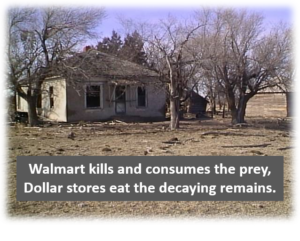
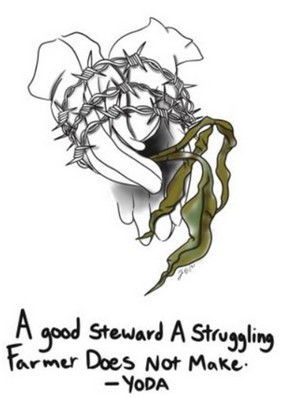
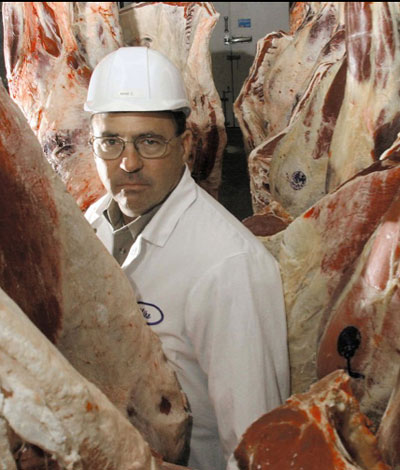 Photo: Sean Cayton - 2003People producing good food from happy animals, while improving the environment, shouldn’t have to fear the government.
Photo: Sean Cayton - 2003People producing good food from happy animals, while improving the environment, shouldn’t have to fear the government.




